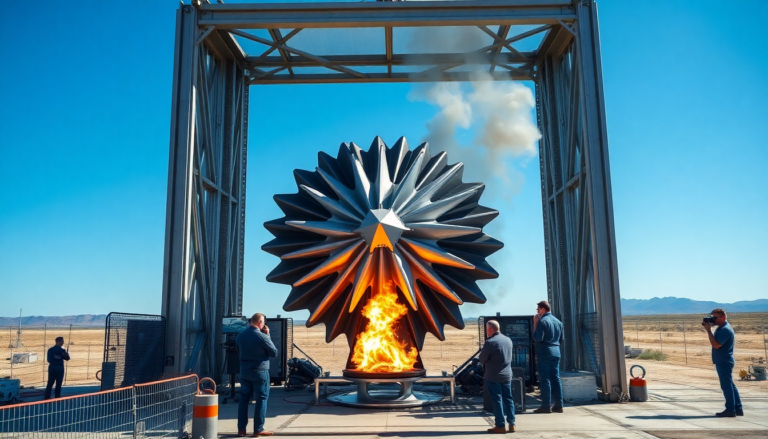Argomenti trattati
Big news in aerospace technology: a groundbreaking hot fire test of a 3D printed aerospike engine has just taken place. This innovative engine, the brainchild of startups Hyperganic and AMCM, highlights the exciting possibilities of generative design driven by artificial intelligence. But what does this mean for the future of space travel? Let’s dive in.
Successful Testing of a New Aerospike Engine
On December 1, 2023, the newly developed aerospike engine made a splash by completing its inaugural hot fire test, achieving a remarkable thrust of 5,000 Newtons. Crafted from a specialized copper alloy ideal for aerospace applications, this engine runs on a fuel mix of cryogenic liquid oxygen and kerosene. This testing represents a pivotal moment in the quest to make aerospike engines a go-to option for launching into space.
“Despite their clear advantages, aerospikes are not used in space access today. We want to change that,” said Lin Kayser, Co-Founder of LEAP 71. The company’s AI system, Noyron, played a vital role in the swift development of this engine, reducing the design timeline to just a few weeks—a significant leap forward compared to traditional methods.
What’s particularly fascinating about the aerospike engine is its ability to operate under various pressure conditions. This means it could potentially eliminate the need for multiple engines customized for specific environments, simplifying design and boosting efficiency in aerospace applications.
Challenges and Innovations in Aerospike Engine Design
Aerospike engines are celebrated for their efficiency, but they come with their own set of challenges. One major hurdle is the need for sophisticated cooling systems to handle the extreme temperatures generated during operation. Josefine Lissner, CEO and Co-Founder of LEAP 71, underscored the complexity of cooling the engine’s spike, which relies on cryogenic oxygen to maintain ideal temperatures. “I am very encouraged by the results of this test, as virtually everything on the engine was novel and untested. It’s a great validation of our physics-driven approach to computational AI,” Lissner noted.
The development of this aerospike engine showcases how AI can tackle intricate engineering challenges with ease. With the power of Noyron, rapid iterations and refinements are possible, setting the stage for future breakthroughs. And guess what? The next generation of aerospike engines is already in the works, with more testing slated for 2025.
What Lies Ahead for Aerospike Engines?
The future looks bright for aerospike engines, with substantial research and development on the horizon. The success of the hot fire test not only supports the current design but also paves the way for further innovations in engine performance and efficiency.
The aerospace industry is keeping a close eye on these developments, as the potential for aerospike engines to transform space travel becomes ever more tangible. With advanced AI tools like Noyron integrated into the engineering process, we can expect a faster pace of innovation, turning once-impossible designs into reality.
As testing progresses, excitement within the aerospace community is palpable. This breakthrough could herald a new era in space access, with aerospike engines poised to play a pivotal role in future missions. Are we on the brink of a space revolution?

